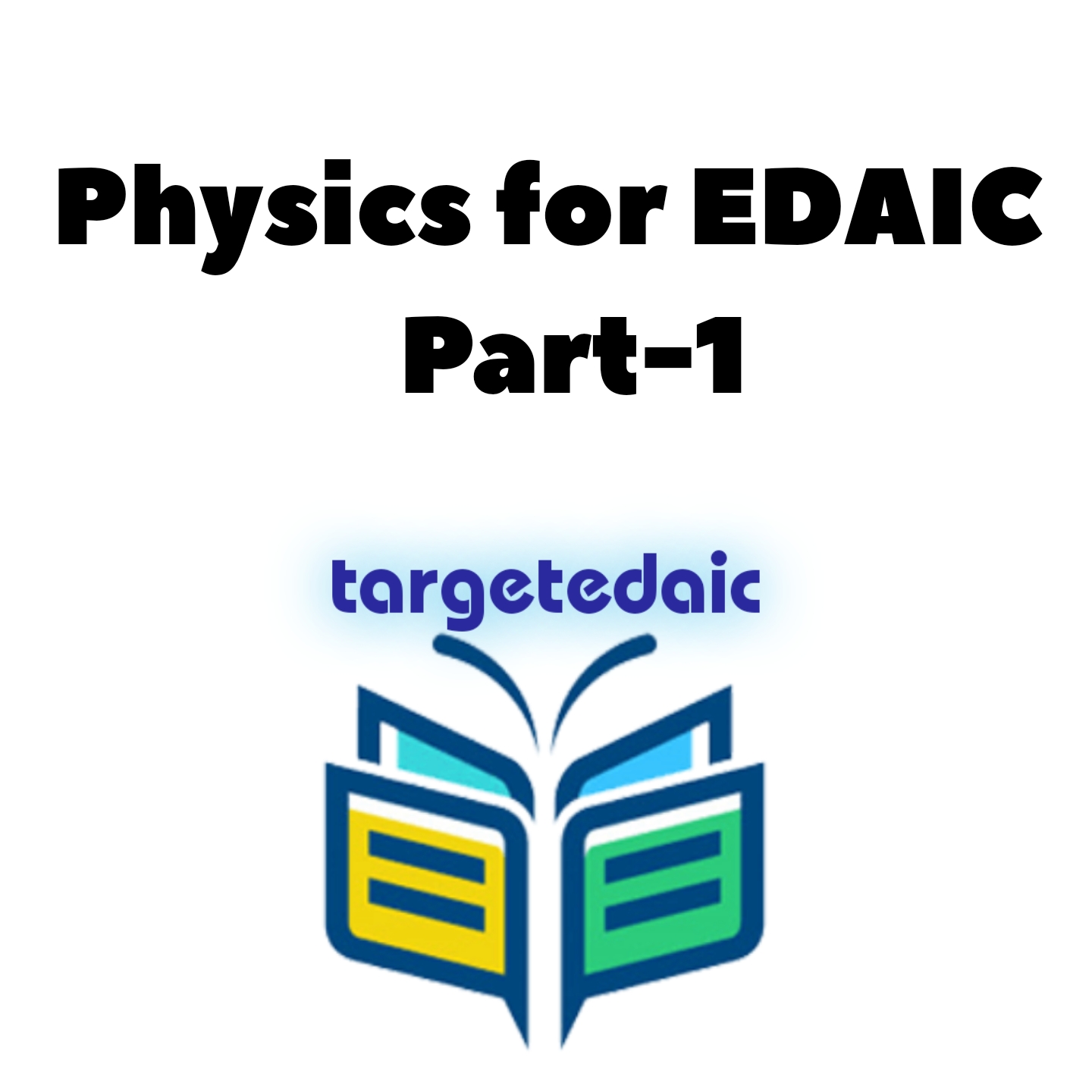PHYSICS FOR EDAIC
Most aspirants desirous of attempting EDAIC/ FRCA or similar platform find it extremely challenging to ace the concepts surrounding ‘applied physics for anaesthesia practice‘. Tragetedaic has attempted to make it simple for you by making the text uncomplicated and supplementing it with understandable examples and pictorial aids (drawings, flowcharts and diagrams). The module has 3 subsections: Base units, Simple mechanics and Electricity. This will be followed by other sections in upcoming parts of the module, wherein we will try to include maximum topics likely to be assessed in the examination. A short section of electricity basics is included here, the complete module is available for your download as well.
BASICS OF ELECTRICITY
A basic understanding of electricity is essential for safe anaesthesia practice and is a commonly asked topic in both formats of EDAIC.
What is electricity?
Electrons are tiny negatively charged particles that orbit around the nucleus of an atom. Electrons are attracted to the positively charged protons within the nucleus of the atom; the attractive forces fade with increasing distance of the electron from the nucleus. Hence, the outermost shell electrons are the most weakly attracted to the nucleus or attached to the atom.
When enough energy is available to the outer shell electron, it moves out of the orbit and becomes a free electron. Each electron carries 1.602 x 10-19 coulomb of charge, and the movement of electrons across a point constitutes an electric current.
SI unit of electric charge is coulomb; 1 coulomb being the electrical charge carried by 6.24×1018 electrons.
It is the flow of this electric charge that constitutes the electric current. The SI unit of current is Ampere. One ampere is a flow of 1 coulomb of charge each second past a point in the conductor.
Conventionally, the direction of an electric current is taken as the direction in which a positive charge would move through the circuit, i.e., from the cathode (positive terminal) to anode (negative terminal). However, the actual charge or electrons actually move through the wires in the opposite direction.
Conductors, insulators, and semiconductors.
Depending upon the ease with which the electrons can move inside a solid, they can be classified as
Conductors: The outer shell electrons of atoms that make up a conductor are loosely bound, making them free to move through the substance of the material under the influence of an external force (the electrical potential). In other words, they are capable of conducting an electric current (movement of electrons).
Examples: Most conductors are metallic (Aluminium, copper, gold) but certain non-metals like carbon are also good conductors. Solutions containing ions, such as saline, can also conduct electricity.
Insulators: The outer shell electrons in insulators are tightly bound and are not available as free electrons, hence these materials do not conduct an electric current.
Examples: Rubber, mica, and glass.
Semiconductors are materials that normally behave as non-conductors, but in certain circumstances (like with a change in temperature that imparts the extra energy to the electrons to move out of the outer sell as free electron), they can be transformed and behave like conductors. Thermistors, transistors, and diodes are constructed from a semiconducting material.
Examples: Silicon, germanium, lead sulphide, selenium, and gallium arsenide.
TO CONTINUE READING THE REST OF THE CHAPTER, DOWNLOAD THE PHYSICS FOR EDIAC-1 MODULE BY TARGETEDAIC. THE CHAPTER COVERS THE BASICS OF CPB CIRCUIT, CPB CONDUCT, COMPLICATIONS, MANAGEMENT, AND ANAESTHETIC IMPLICATIONS OF A PATIENT UNDERGOING CARDIOPULMONARY BYPASS.
Targetedaic course modules are an excellent resource for EDAIC and FRCA exam preparation. Our modules are based on the syllabus and frequently asked questions in MCQ and viva examinations. The study material is designed to be a one-point reference for all your study needs for a topic and are available as separate chapters or combined system-based modules for your convenience and to suit your need. Feel free to contact us for any queries.
In addition, you can join our Facebook group to stay updated with targetedaic content and MCQ discussion.


